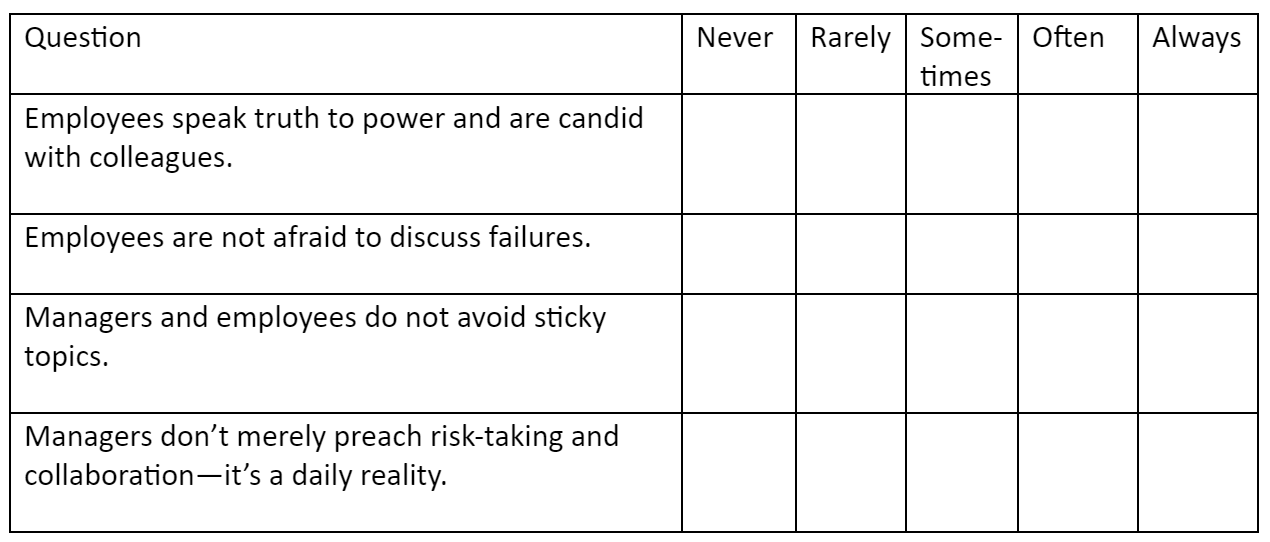How Bad Bosses Stop Innovation
In 1913, Henry Ford reduced the time to make a car from over 12 hours to around 90 minutes. It sounds impossible, but he had a secret: simplified work tasks, interchangeable parts, a moving assembly line, and fear. We’ll get back to fear in a moment, but the three principles that made it all work involved:
Place tools and workers in a sequence so that each part travels the least distance.
Use a moving line so that workers finish their assembly portion in the same place.
Deliver the parts at appropriate locations on the line.
I’ve heard about another principle mixed in with the first three: no smiling on the assembly line.
You could get canned for that.
As you can see from this short video clip, the work involved the full use of one’s hands—the tasks were straightforward so that anyone could do it—no brains allowed.
With mind-numbing jobs like Ford’s assembly line comes rapid turnover. In 1914, Ford staunched the resignations by doubling wages to $5 a day, but if you were a Ford worker, it proved to be a Faustian bargain. Along with the raise came 200 investigators from Ford’s sociological department to check up on you and your family.
They arrived at your home unannounced to ask about your marital relationships, observe whether your kids were in school, and see if your house was clean. After that, they checked into your spending habits and alcohol consumption. You could lose your job for an infraction, so naturally, their investigations roused fear.
How bad bosses (like Fred) stop innovation
We still use a version of fear-based systems today—my worst boss Fred did. Fred’s assembly line was an excruciating two–three-hour morning meeting, and his interchangeable parts were employees. During his sessions, it was best to fix your eyes on the table because if Fred misinterpreted your expression, he might pounce.
He saw himself as tough but fair and spent most of the meetings lecturing or spouting off in tirades. Fred did one thing really well: he ramped up anxiety to 1914 fear levels by bullying, belittling, or selectively ignoring attendees.
Fred came in around 6:00 a.m. to write everyone’s name and tasks due that day on an old-fashioned yellow legal pad. The morning meeting attendees knew a grilling was coming, so they thought:
Come hell or high water, I will complete the one task Fred gave me, or I’ll have bulletproof excuses for why I didn’t. And I’ll make sure not to think out of the little box Fred has placed me in.
That last sentence explains a tendency I noted among Fred’s employees. They didn’t try to solve anything. If they hit a roadblock during the day, they filed in the next meeting to report the problem to Fred. Fred would scream at the delay-perpetrator to get things flowing again. All issues went up the line because the workers lacked the confidence to solve anything themselves.
Fear symptoms (Quick Quiz)
See how much of a Fred-induced environment you have at your work. Check the appropriate boxes to measure your organization’s fear quotient. More checks on the far right signify a psychologically safe environment.
From the questions above, it is easy to spot a significant symptom of a fear-filled culture—a lack of candor.
Fear trumps reward. Rewards such as a fully stocked breakfast bar or strongly worded corporate policies on the importance of work–life balance mean far less when you work in an unsafe workplace.
We could also ask another question: Do you work in a fun environment? That’s another great indicator of a fearless culture.
Or ask yourself, “Am I allowed to try something that could fail?”
Two final reasons you need less fear for more innovation
1. The human brain must be in a relaxed, alpha wave state before the magic of insight occurs.
Without a safe ground for thinking and reflecting, employees don’t come up with significant improvements to work processes and procedures—as a result, an organization can remain somewhat frozen in time.
In a fear-based leadership approach like Fred’s (or Vladimir Putin’s), creativity, collaboration, and experimentation come to a screeching halt. Leave your brains at the door because there is no room for new ideas unless they are Fred’s ideas.
2. When you are bullied or humiliated, your logical brain shuts down, and emotions flare because of something psychologists call social pain.
This social pain is held in memory longer and more intensely than physical pain.
In short, the Freds of the world do lasting damage because the pain remains long after they’re gone.
In closing
Ford produced a Motel T every 24 seconds. But how much innovation did he pull out of the workforce? Luckily for all, management philosophy changed over the next 86 years. By the end of the century, in the year 2000 alone, Toyota generated and acted on 100,000 employees’ ideas.
Leaders like Fred, or even a mini-Fred, can be deadly for organizations because they give the appearance of progress. It’s true; they get things done. But what they provide is hollow productivity. They inch forward with administrative successes but with far less innovation under the surface—as a result, leaps in improvement don’t occur.
Think of Fred and his ilk as Asian longhorn beetles. They bore into a tree and slowly kill it from within. It looks fine from the outside, but inside, it’s one good storm from collapsing.
Superior leadership reduces psychological fear and allows appropriate risk-taking, which boosts motivation and innovation.
Maximize your leadership potential today! Dive into the secrets of your brain's productivity and lead with clarity. Subscribe to my newsletter for leadership insights delivered direct to your inbox.
Until next time.
Mike


